order
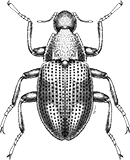
Coleoptera
“Adult Beetles”

Coleoptera
“Larval Beetles”

Diptera
“True Flies”

Ephemeroptera
“Mayflies”
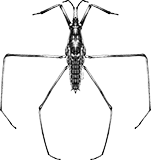
Hemiptera
“True Bugs”

Lepidoptera
“Aquatic Caterpillars, Snout Moths”

Megaloptera
“Alderflies, Dobsonflies, and Fishflies”
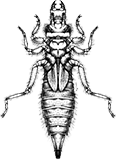
Odonata
“Dragonflies and Damselflies”
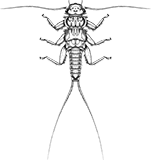
Plecoptera
“Stoneflies”
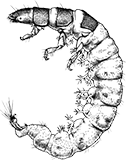
Trichoptera
“Caddisflies”
family
Elmidae
Optioservus
“Riffle Beetle Larvae”
Genus Overview
This is a widespread genus with 13 North American species. Larvae and adults live in fast and slow portions of streams, clinging to substrate. Larvae are scrapers of periphyton on rock surfaces.
Characteristics
POLLUTION TOLERANCE
Southeast: 2.7 and higher
Upper Midwest: 4 and higher
Midwest: 2.75 and higher
Mid-Atlantic: 4 and higher
0 = least tolerant, 10 = most tolerant
FEEDING HABITS
Collector / Gatherer
Scraper / Grazer
Scraper / Grazer
MOVEMENT
Clinger
DISTRIBUTION
Widespread (east of the Rocky Mtns.)
HABITAT
Lotic-depositional
Lotic-erosional
Lotic-erosional
Diagnostic Characters
order
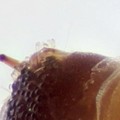
Eye Spots
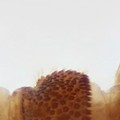
Lateral Gills USUALLY Absent
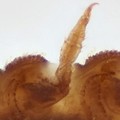
USUALLY 4-5-Segmented Legs
family
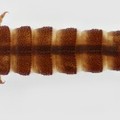
Brown, Sclerotized, Spindle-Shaped Body
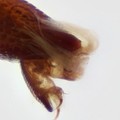
Operculum
+ Expanded Character List
Order:
Larvae: Usually without lateral abdominal gills. If gills present, then 4 hooks clustered on segment 10. Thoracic legs each usually with 4 or 5 segments and with 1 or 2 claws; if without legs, head distinctly sclerotized and posterior body (thorax and abdomen) simple, without gills, hair brushes, suckers, or breathing tube. Eye spots usually present, but compound eyes absent.
Family:
Labrum and clypeus separated by distinct suture. Antennae 2–3 segmented. Head with ocelli in groups of 5. Legs adapted for walking, sometimes small, each 3–4 segmented and with single claw. Thoracic tergites clearly defined. Abdomen 9-segmented, ventral gills absent from segments 1–8. Segment 9 (posterior-most segment) with ventral lid-like flap (operculum) concealing thread-like gills and pair of hooks. Body strongly sclerotized (hardened), dark brown or red-brown, roughly cylindrical or spindle-shaped, with head and legs visible in dorsal view.
Genus:
Prothorax with lateral postpleurites each composed of two parts, without posterior sternum. Mesopleuron composted of one part. Abdominal terga without median and sublateral humps or small median humps present, pleura present on segments I-VII.

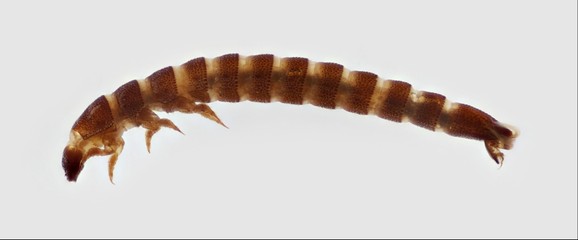

Dorsal
Lateral
Ventral



